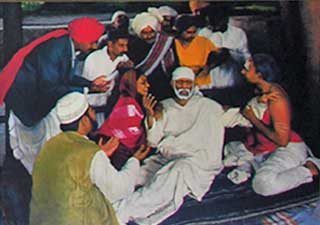The birth and the early life of Sai Baba are not much known. From the year 1858, Baba lived in the village of Shirdi in the state of Maharashtra for over sixty years. Baba came to Shirdi in 1858 accompanying a wedding procession as guest of honour. He was greeted my Mahalsapathi “Ya - Sai” (Welcome Sai). Baba accepted that name to be eternally his and spent his early days at Shirdi, under a neem tree and later lived in the masjid which he named as Dwarkamai or Mother Dwarka.
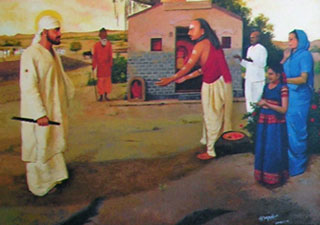
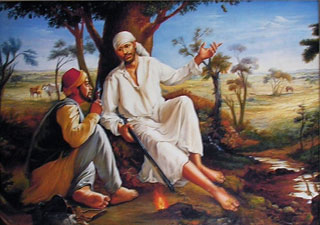
Chand Patil was once riding through the forest when suddenly he felt an acute urge to smoke. To his great dismay, however, he found that he did not have the wherewithal to ignite a fire to light his chelum with. Seeing Sai Baba seated under a tree, the rider approached him for a match. Baba had no matches, but just by thrusting the tongs nearly, he produced flames. The rider witnessing the miracle realizes Baba’s divine stature and kneels to him in devotion.
Sai Baba's grinding of wheat in the hand-mill. It was not wheat that was ground but plague or cholera itself was ground to pieces and cast out of village.
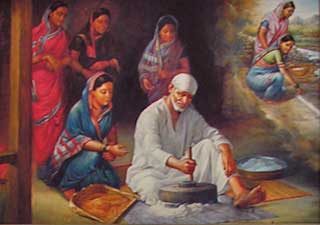
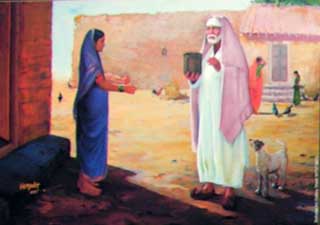
He begged for alms and shared what he got with his devotees and all the creatures around him. He never kept any food in reserve for the next meal.
Sai Baba was the common man’s God. He lived with them; he slept and ate with them. He had no pretensions of any kind. Baba used to feed the fakirs and devotees and even cook for them. The food that Baba made seemed to grow in abundance and there was always enough for everyone. The touch of a Sat-Purusha unlocks the storehouse of the Goddess Annapoorna’s unlimited resources.
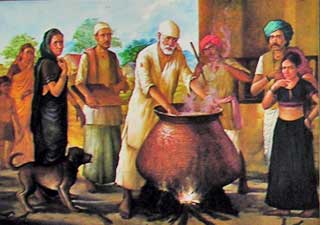
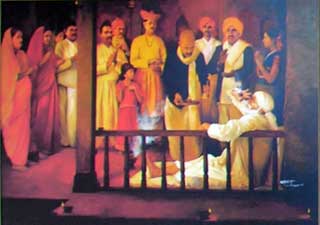
Devotees regularly worshipped Sai Baba in the Chavadi, where he slept on alternate days.
Sai Baba’s knowledge of the Shastras, the Gita, the Quran and other scriptures was phenomenal. Without studying or reading books, Baba possessed a rare proficiency in all the scriptures, and he could quote a verse or a line from these books and scriptures to show whereas particular truth lay embedded.
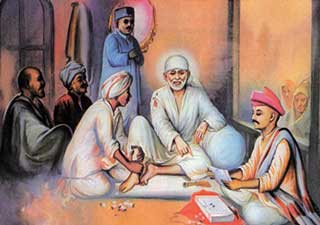
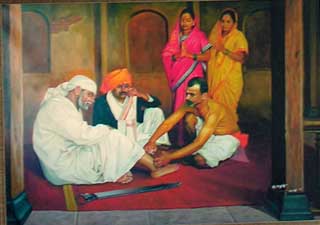
On knowing that Baba had burnt his hand, Nana Chandorkar brought a notable doctor from Bombay. But Baba declined to get treated by him . He told,God is his doctor, Bhagoji Shinde applied ghee on the burnt hand, and putting some leaves on it bandaged it. This was done by him daily. Though he was a leper, he was a very lucky person to have served Baba so closely. For nearly 8 years, from 1910 to 1918, till Baba’s Samadhi, he dressed Baba’s burnt hand daily.
Baba used to sleep on an eighteen-inch wide plank suspended with old rags about 7 or 8 feet above ground with lighted lamps placed on the plank.
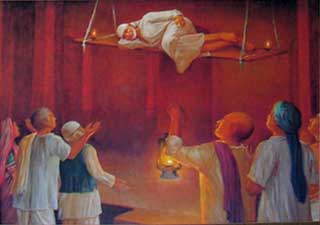
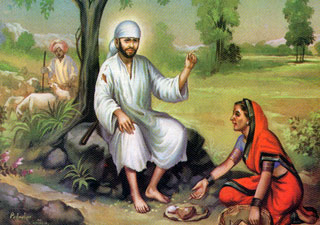
Here is an instance of a devotee's burning love for the master. Baijabai daily sought out Baba in the forest where he lived in the early days, in order to bring him food, which she lovingly prepared for him. Baba raises his hand in a gesture of blessing.
Sai Baba distributed the holy 'Udi' - the panacea for all troubles - to his bhaktas. 'Udi' is the ash from the perpetual sacred fire - Dhuni - lit by Baba a hundred years ago. The Udi is the token of his divine grace to all who come to him for help.
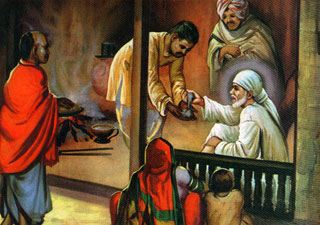
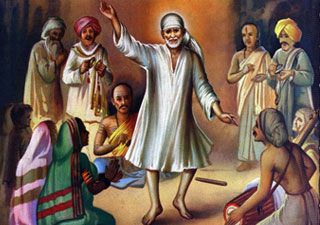
Sai Baba in the company of devotees and fakirs used to dance and sing in divine bliss, with small tinklets tied around his ankles.
The October 15, 1918 was a sorrowful day for the little village of Shirdi, for in the heavy hours of the noon, the beloved master suddenly breathed his last. Quietly and unobrusively, Baba gave up his body and let his head fall gently on the shoulders of a near disciple. Though Sai Baba might have left his mortal coil, he still is alive for his devotees. He is a Living God. Even today, though he has left his gross body, we feel his presence and obtain his grace and protection every day.
